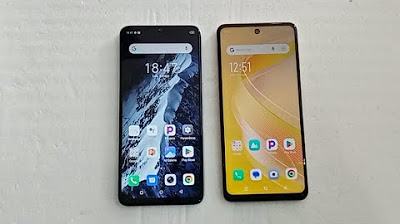CRISPY FRIED BITTER GOURD
Summary
TLDRThe transcript appears to be a series of musical interludes and spoken words, likely from a video with a rhythmic structure. It includes repeated musical segments, possibly indicating a pattern or theme, and sporadic speech interspersed with 'y' and 'e', which might suggest a conversation or narrative. The use of 'no' and 'i' hints at a possible dialogue or a response within the video's content.
Takeaways
- 🎵 The script features a repetitive pattern of music interludes and spoken words.
- 🗣️ There is a consistent use of the word 'y' (and) throughout the transcript, indicating a connective theme.
- 🤔 The phrase 'por qué' (why) suggests a questioning or investigative tone.
- 🎶 Music seems to be an integral part of the narrative, possibly to set a mood or pace.
- 📖 The transcript is likely from a multimedia presentation, given the alternation between music and speech.
- 🔁 The repetition of 'y' and '[Música]' could be a stylistic choice to emphasize a rhythm or beat.
- 🤷♂️ The use of 'e, no' (and, no) might indicate a contrast or a denial within the dialogue.
- 👥 The presence of 'i' (and) suggests a continuation or addition to a point being made.
- 🎧 The script might be from a podcast or audiobook, given the audio cues and narrative style.
- 🎥 The combination of music and speech could be used to create a dynamic and engaging listening experience.
Q & A
What is the main element that appears repeatedly in the transcript?
-The main element that appears repeatedly in the transcript is '[Música]' which suggests the presence of music in the background.
How many times does the word 'y' appear in the transcript?
-The word 'y' appears six times in the transcript.
What does the word 'e' in the transcript signify?
-The word 'e' in the transcript could be a filler word or a connector, often used in speech to link phrases or thoughts.
What is the significance of the word 'por qué' in the transcript?
-The phrase 'por qué' translates to 'why' in English, indicating a question or a point of inquiry in the conversation.
How many instances of the word 'no' are there in the transcript?
-The word 'no' appears twice in the transcript.
What could be the possible context of the repeated '[Música]' in the transcript?
-The repeated '[Música]' suggests that the transcript is likely from a video or audio recording where music is playing, possibly to set the mood or as a background element.
What does the presence of 'i' and 'no' in the transcript imply?
-The presence of 'i' and 'no' could imply a dialogue or a statement being made, possibly in response to a question or a statement.
What language is the transcript in?
-The transcript appears to be in Spanish, as indicated by the words 'y', 'por qué', and 'no'.
What could be the reason for the lack of complete sentences in the transcript?
-The lack of complete sentences might suggest that the transcript is a rough draft, an excerpt from a longer conversation, or a summary of key points.
How might the '[Música]' affect the understanding of the transcript?
-The '[Música]' could affect the understanding of the transcript by indicating pauses or transitions in the audio, which might be important for the context of the conversation.
What additional information might be needed to fully understand the transcript?
-To fully understand the transcript, one might need the full context of the conversation, the speakers' identities, and the topic being discussed.
Outlines

Cette section est réservée aux utilisateurs payants. Améliorez votre compte pour accéder à cette section.
Améliorer maintenantMindmap

Cette section est réservée aux utilisateurs payants. Améliorez votre compte pour accéder à cette section.
Améliorer maintenantKeywords

Cette section est réservée aux utilisateurs payants. Améliorez votre compte pour accéder à cette section.
Améliorer maintenantHighlights

Cette section est réservée aux utilisateurs payants. Améliorez votre compte pour accéder à cette section.
Améliorer maintenantTranscripts

Cette section est réservée aux utilisateurs payants. Améliorez votre compte pour accéder à cette section.
Améliorer maintenantVoir Plus de Vidéos Connexes

FAROE ISLANDS from Above - Drone Footage - Anesthesia4Adventure

infinix smart 8 vs itel s23: speed comparaison

Lastikle Çalışan Basit Gemi Yapımı - Elektriksiz Gemi Yapımı

Behaviorism Learning Theory

Gundam Seed: 暁の車 (Akatsuki no Kuruma) Fiction Junction YUUKA - Classical Guitar Cover Tab Tutorial

Kathang Isip | Short Film Music Video (Ben&Ben)
5.0 / 5 (0 votes)
